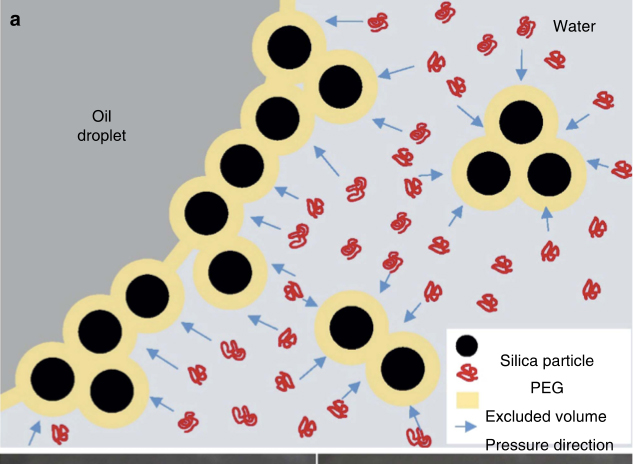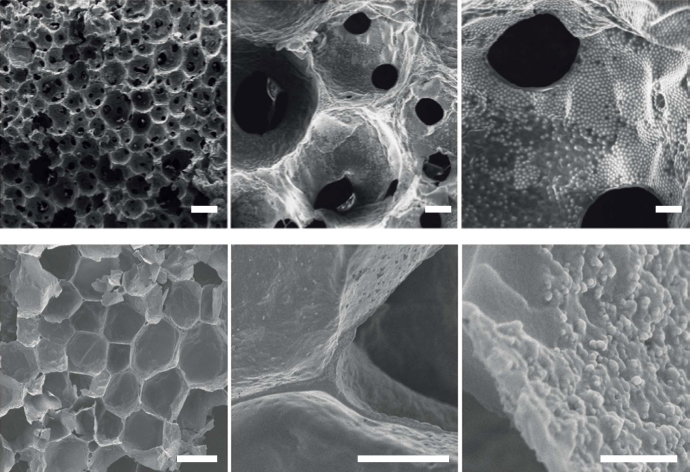At KAIST Institute for Nanocentury, Professor Siyoung Choi’s research team has developed a universal technique to form high internal phase Pickering emulsions (HIPPEs) without any complicated processes such as colloid surface treatment or gelation of polymers. It is well known that HIPPE is difficult to make because it needs to satisfy two contradictory requirements: particles should be very hydrophilic/hydrophobic to prevent phase inversion, and at the same time should not be so hydrophilic/hydrophobic to enhance adsorption. This strictly limits the properties of the colloid surface. Nevertheless, the team successfully synthesized HIPPEs by exploiting a well-known force, depletion attraction. The team, for the first time, has applied this force to enhance particle adsorption to the interface, and thus enabling particle-covered high internal phase emulsions to be synthesized as shown in Figure 1. By simply adding polymer molecules as depletants, diverse HIPPEs with different kinds of particles such as metallic, ceramic, and polymeric as well as particles of various sizes and shapes were created as can be seen in Figure 2. The team, furthermore, demonstrated that HIPPE is processable so that it can be transformed into other shapes such as thin films and fibers.
The material that the team has developed has several more distinctive benefits than previous materials: 1) wide choice of particles and polymers to offer various types of functional materials suited for a specific application; 2) simple synthesis process without any modification of particles and polymers to allow post-modification of HIPPE, thus yielding uncountable combinations of materials that have particle-covered interfaces; 3) better processability to provide the potential for creating specific shapes; and 4) structural control at various length scales to provide structural designs (e.g., by controlling intra-structure of droplets or by the use of meso/micro-porous particles). This simple and cheap synthesis strategy of particle covered porous materials could provide advantages in a variety of fields: environmental applications such as filters and desalination membranes; energy storage/conversion materials like supercapacitors, battery separators, catalytic layers of fuel cells, and solar cell templates; and absorbents such as carbon dioxide absorbers and superabsorbent porous polymers.


Choi, Siyoung (Department of Chemical and Biomolecular Engineering)
Homepage: http://mcfl.kaist.ac.kr
E-mail: sqchoi@kaist.ac.kr






